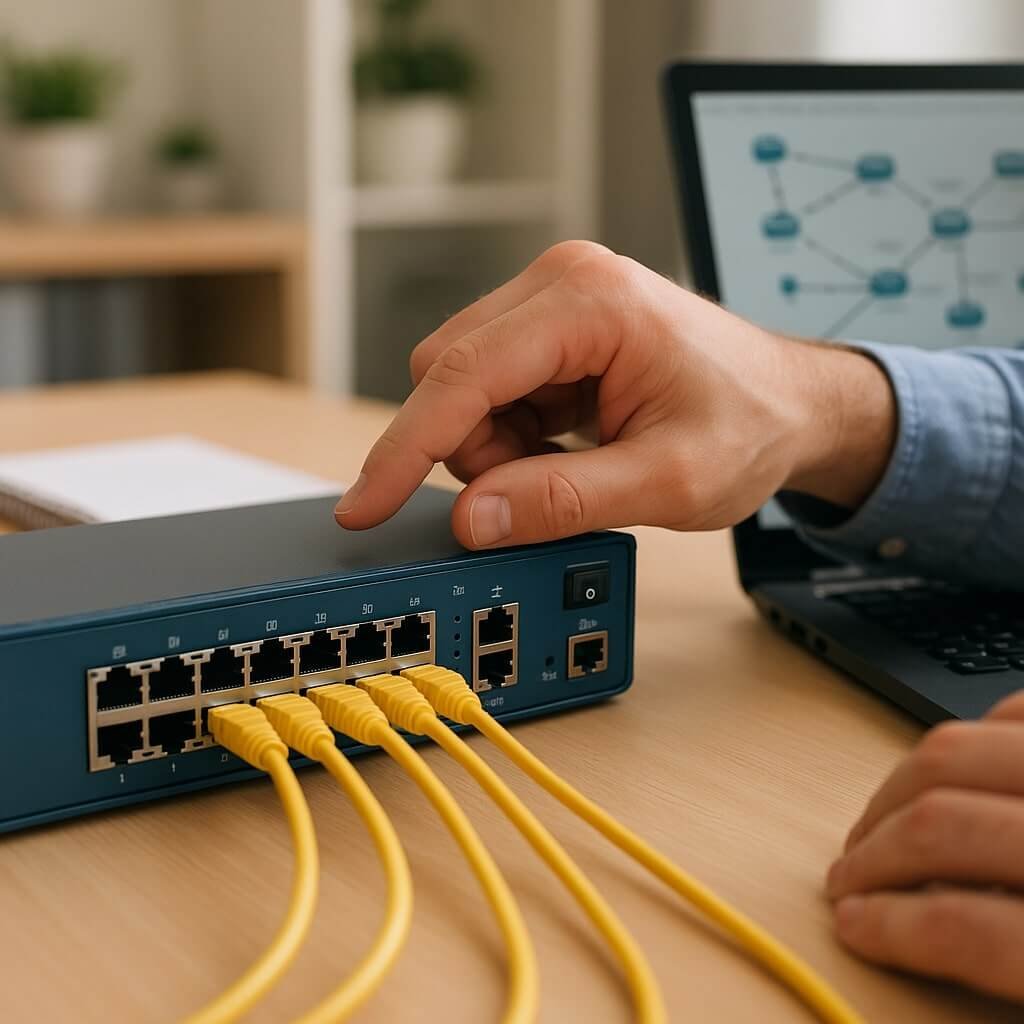When it comes to securing your home network, there are vital steps you shouldn’t overlook. Changing default login credentials is just the beginning. Implementing WPA3 encryption can greatly enhance your data protection. Regular firmware updates are essential to patch vulnerabilities, while a guest network can help keep your personal devices safe. Finally, a strong password manager simplifies secure password management. These strategies will fortify your network, but there’s more to take into account for thorough protection.
Key Takeaways
- Change default login credentials to unique usernames and strong passwords to reduce vulnerability to attacks.
- Enable WPA3 encryption for enhanced security and better performance against unauthorized access and data eavesdropping.
- Regularly update firmware to protect against vulnerabilities and improve network performance with essential security patches.
- Create a guest network to isolate primary devices and protect personal data from unauthorized guest access.
- Use a strong password manager to generate, store, and securely share complex passwords, enhancing overall password strength.
Change Default Login Credentials
Although many users overlook it, changing default login credentials is an essential step in securing your home network. Most routers come with a default username and password that are widely known, making them vulnerable to unauthorized access.
By replacing these credentials with a unique username and a complex password, you greatly increase your network’s security. Aim for a password that includes a mix of uppercase and lowercase letters, numbers, and special characters to enhance password complexity. Avoid using easily guessable information, such as birthdays or names.
Regularly updating your login credentials also helps protect against brute-force attacks. Taking these steps guarantees that only authorized users can access your network settings, thereby safeguarding your personal information and connected devices.
Enable WPA3 Encryption
After securing your router with strong login credentials, the next step is to enable WPA3 encryption. WPA3 offers enhanced security features that protect your network from unauthorized access. It’s vital to confirm your devices support WPA3 compatibility, as this will provide the most robust protection. Here are some key benefits that make WPA3 an essential choice:
| WPA3 Benefits | Impact |
|---|---|
| Stronger Encryption | Protects data from eavesdropping |
| Improved Authentication | Reduces risk of unauthorized access |
| Better Performance | Less lag during network usage |
| Increased Device Support | Guarantees more devices can connect securely |
Update Firmware Regularly
Updating your router’s firmware regularly is crucial for maintaining a secure home network. Firmware updates often include critical security patches that protect against vulnerabilities and threats.
By keeping your firmware up to date, you leverage firmware benefits such as enhanced performance and new features that improve your network’s efficiency. Manufacturers frequently release updates to address newly discovered security risks, so ignoring these updates can leave your network exposed.
Set a reminder to check for updates monthly or enable automatic updates if your router supports it. This proactive approach not only fortifies your network against intrusions but also guarantees you’re utilizing the latest technology advancements.
Create a Guest Network
Creating a guest network is an effective way to enhance your home network security. By setting up a separate network for visitors, you isolate your primary devices from potential threats.
Setting up a guest network boosts home security by isolating your primary devices from potential threats.
The guest network benefits include added protection for your personal data and devices, as guests can only access the internet, not your local files or networked devices.
It’s important to establish guest access limitations, such as restricting bandwidth and disabling file sharing, to minimize risks. Additionally, you can easily manage guest access by setting a time limit or regularly changing the guest password.
This way, you guarantee that your home network remains secure while still providing internet access to your visitors.
Use a Strong Password Manager
One of the best ways to protect your online accounts is by using a strong password manager. These tools help you generate and store complex passwords, greatly improving your password strength. They also simplify password sharing when necessary, allowing you to share access securely without compromising security.
| Feature | Benefit | Example |
|---|---|---|
| Password Generation | Creates unique, strong passwords | 8@Vg3#tQ!wZ9 |
| Secure Storage | Keeps passwords encrypted | AES-256 Encryption |
| Password Sharing | Shares access securely | One-time link |
Conclusion
By following these five essential tips, you can markedly enhance your home network security. Changing default login credentials, enabling WPA3 encryption, regularly updating your firmware, creating a guest network, and using a strong password manager are vital steps in safeguarding your data. Don’t underestimate the importance of these measures; they provide a robust defense against potential threats. Stay proactive in your approach to network security, and you’ll guarantee a safer online environment for you and your devices.






